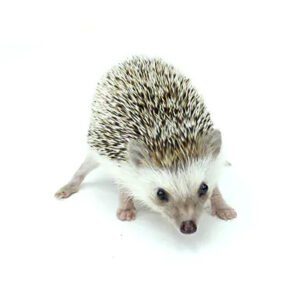Anatomy and Adaptations of the Prehensile Tailed Porcupine
The prehensile tailed porcupine (Coendou spp.) is a remarkable species known for its unique anatomical features that facilitate its arboreal lifestyle. One of the most distinguishing physical traits of this porcupine is its long, prehensile tail, which is adapted to grasp branches and securely hold onto tree trunks as it navigates its forested environment. This adaptation is particularly beneficial for maintaining stability when climbing and forager for food in the high canopies.
In addition to its tail, the prehensile tailed porcupine possesses a coat of sharp, quill-like spines that serve as both armor and a defense mechanism against potential predators. These quills can easily detach when an animal comes into contact with them, embedding themselves in the attacker’s skin, thus deterring further intrusion. The constituents of the porcupine’s quills have evolved to be lightweight yet formidable, allowing for stealthy movement across branches while providing protection.
This species also exhibits a relatively robust body size, typically ranging from 12 to 36 inches in length, with corresponding adaptations that enhance its climbing abilities. Their strong, curved claws enable effective grasping of branches during both ascent and descent, allowing them to navigate complex forest structures with ease. These physiological traits work in conjunction with a predominantly herbivorous diet, consisting of leaves, fruits, and bark. Their teeth are specifically designed for gnawing, which assists them in accessing various foliage within their habitat.
Through their unique anatomy and adaptations, the prehensile tailed porcupine has developed specialized skills for survival in the dense, arboreal habitats they occupy. Their ability to efficiently forage for food, evade predators, and expertly navigate through trees exemplifies the remarkable evolutionary processes that define this fascinating creature.
Habitat, Behavior, and Conservation Status
The prehensile tailed porcupine (Coendou prehensilis) primarily inhabits the lush rainforests of South America, with significant populations found in countries such as Brazil, Colombia, and Venezuela. These nocturnal rodents are adept at living among the dense foliage, often residing in trees where they can utilize their specialized, prehensile tails to grasp branches, providing stability as they move through their arboreal environment. Their habitat preferences highlight the species’ reliance on a stable ecosystem rich in both flora and fauna, which supports their diet mainly comprised of fruits, leaves, and bark.
Behaviorally, the prehensile tailed porcupine exhibits a unique social structure. These creatures are generally solitary but may form loose associations, particularly during the mating season. Mating typically occurs in the latter part of the year, leading to the birth of a single offspring after a gestation period of approximately 112 days. Parenting practices are noteworthy, as mothers are known to be highly protective and nurturing, ensuring that the young porcupines learn essential survival skills before venturing independently.
Despite their adaptability, the prehensile tailed porcupine faces numerous threats that jeopardize its existence. Habitat loss due to deforestation for agriculture and urban expansion poses a significant risk to their survival. Additionally, poaching for bushmeat and the illegal pet trade further diminishes their populations. In response to these alarming trends, conservation efforts have gained momentum. Organizations and local governments are increasingly focusing on habitat protection, establishing reserves and promoting reforestation initiatives. Understanding the ecological significance of the prehensile tailed porcupine within its habitat is crucial, as preserving this species contributes to maintaining biodiversity and healthy ecosystem dynamics.





